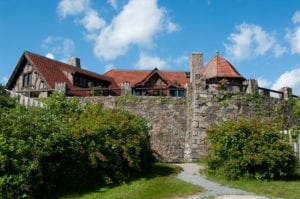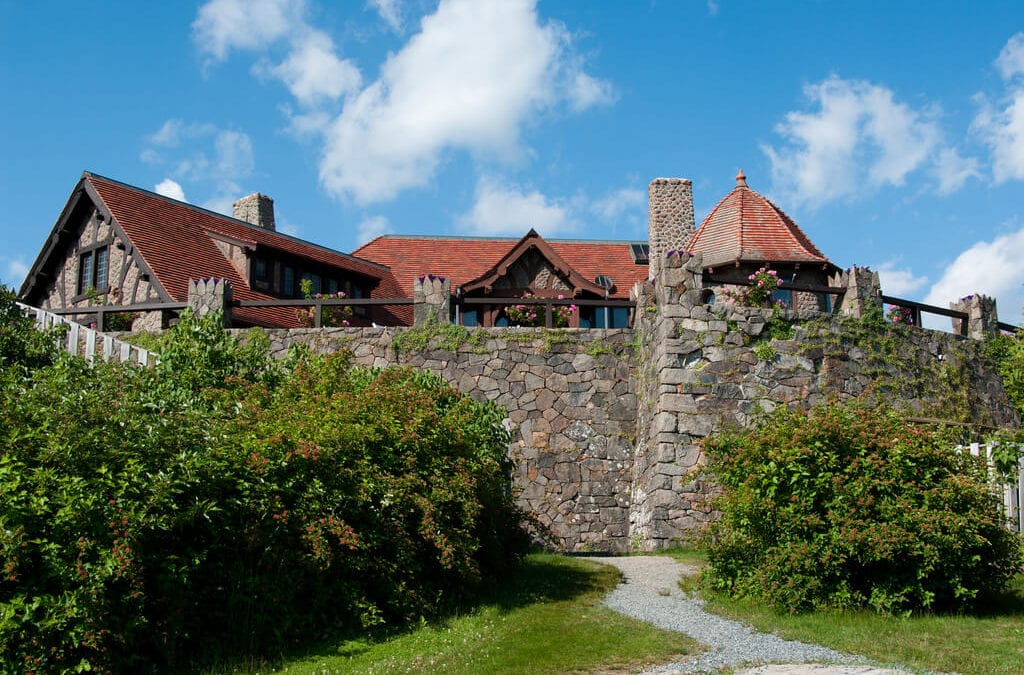 Individual sovereignty is a concept that formed the bedrock of Common Law traditions extending back to the Magna Carta. Its essence is self-ownership, and its antithesis is subservience and slavery. The idea is axiomatic. Some have even called it self-evident. There are few expressions, however, that encapsulate the sentiment’s thrust better than the well-worn saying “a man’s home is his castle.” And perhaps it was the latter that spurred a handful of New Hampshirites to erect homes that have taken the castle concept from the cognitive realm to the weighty domain of stone masonry.
Individual sovereignty is a concept that formed the bedrock of Common Law traditions extending back to the Magna Carta. Its essence is self-ownership, and its antithesis is subservience and slavery. The idea is axiomatic. Some have even called it self-evident. There are few expressions, however, that encapsulate the sentiment’s thrust better than the well-worn saying “a man’s home is his castle.” And perhaps it was the latter that spurred a handful of New Hampshirites to erect homes that have taken the castle concept from the cognitive realm to the weighty domain of stone masonry.
Nearly a century ago the United States was still basking in the glow of the Industrial Revolution. The 16th Amendment and its equally odious contemporary, the Federal Reserve, were young enough to engender only a fraction of the scorn they would later deserve. Barely registered tremors shook the political landscape across the pond, distant warnings that told little of the senseless carnage to follow. Optimism reigned. It permeated the very fabric of the times. Scientific discoveries were coming one after the other. Standards of living were rising. All seemed possible.
Enter Edward Searles, a wealthy septuagenarian widower who had a penchant for antiques, interior design, and a desire to connect with his English roots. Searles had the means to make the home-as-castle metaphor into a reality … and that’s just what he did.
Located in Windham, a mere catapult’s throw from I-93, Searles Castle is a 20-room monument to Searles and the exuberance prevalent during the early part of the Twentieth Century. The building was completed in 1915 at a cost of more than $1.25 million (nearly $30 million in today’s neutered notes) and the craftsmanship is apparent in the stone and woodwork. Additionally, imported artifacts and marble were procured to add to the sense of majesty. Though nowadays the castle primarily is used as a venue for special events, public tours have been offered in the past. It’s well worth checking out to experience a touch of its grandeur.
While southern New Hampshire boasts of Searles Castle, the Lakes Region is home to more than one lofty edifice. One is Lucknow Estate in Moultonborough. The other is Kimball Castle in Gilford.
Lucknow overlooks Lake Winnipesaukee, perched atop the Ossippee Mountain Range. The structure was built in the Arts and Crafts style by Thomas and Olive Plant around 1914. Slightly smaller than Searles, the building is no less impressive. The views are such that the sky appears as an extension of the grounds, making it wholly understandable why the mansion is commonly called the Castle in the Clouds. During the next decade, the Plants would see their fortune dwindle, but the castle remained a symbol of their earlier optimism. Tours of Lucknow are available daily between June and October.
Nearly 20 years before the aforementioned castles were constructed, Benjamin Kimball picked Lockes Hill on Belknap Point, a spot that also looks out over Lake Winnipesaukee, as the location for his modern manor. Kimball, however, looked to Germany for inspiration. He chose to emulate castles found along the Rhine and he too employed the finest stone masons to make his vision a reality. Despite the quality of its construction, Kimball Castle has fared poorly over the years. The mortar has weakened and the walls are in danger of toppling. It’s a sad sight. What was once a testament to the individual spirit has now become fodder for local government commissars.
Reading the above, one might think New Hampshire castles are the result of a special time in history, where the convergence of wealth and self-determination resulted in a magnificent but brief paean to fairy-tale fortresses. That would be wrong. David O’Connor and Loretta Salazar started construction of Anam Cara Castle in 1996. The castle is located in Barrington and the owners modeled it after 10th century Celtic keeps. Yet, their vision for the building extends beyond mere style. According to them, “Castle Anam Cara was built to be a reflection of the shared philosophies and outlook on life that David and Loretta hold as unswerving guidelines in their day to day existence. Independence, simplicity, personal responsibility, the interconnection of all life, the continual quest for greater understanding of self and the commitment to stand up for the principles they believe in.” Individual sovereignty didn’t die after 1920 or the Great Depression. David and Loretta are present-day examples of it.
Literal castles are among the many fascinating places to visit in New Hampshire. They can inspire awe and spur the imagination. But each of us who calls the Granite State home resides in our own version of a castle. From the humble to the grandiose, we are sovereigns within our realm.
Photo by Selbe B

